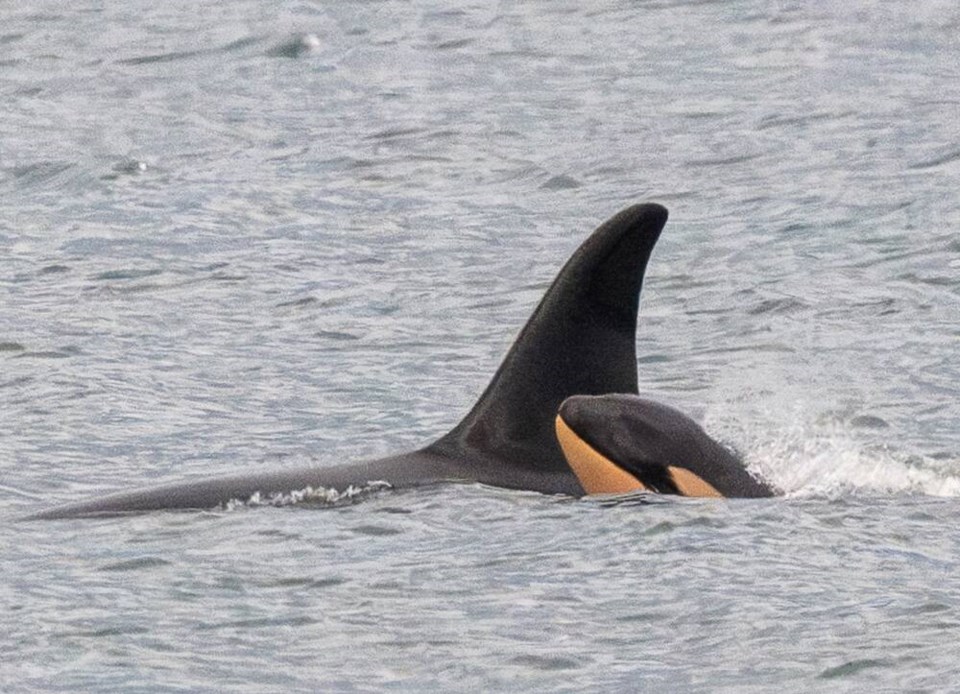Scientists have confirmed the most recent calf born to the endangered southern resident killer whales is a female.
The newborn, first observed Dec. 20 in Puget Sound, has been assigned the alpha-numeric designation J61.
The Center for Whale Research said a team of researchers, including U.S. federal fisheries scientists, were able to conduct longer-term observations of the new calf on Dec. 23, including photos of the calf’s underbelly confirming she is a female.
That research also allowed observers to “confidently assign” the new calf’s mother as J35.
J35, also known as Tahlequah, captured worldwide headlines in 2018 when she pushed the body of her dead calf with her head for 17 days over hundreds of kilometres before finally letting it go.
Tahlequah has had two other calves. The eldest, J47, also known as Notch, was born in 2010, and J57, or Phoenix, was born in 2020.
Researchers are expressing concern about the new calf’s health based on the behaviour of both J35 and J61.
“Early life is always dangerous for new calves, with a very high mortality rate in the first year,” the Center for Whale Research said in a social media post on Dec. 23.
“J35 is an experienced mother, and we hope that she is able to keep J61 alive through these difficult early days.”
The centre said researchers are eager to conduct followup observations of the calf’s behaviour and physical condition when possible.
J-pod is one of three pods than make up the southern resident killer whales. There are only about 73 remaining and the population is under pressure from declining salmon stocks, pollution and human interference.



